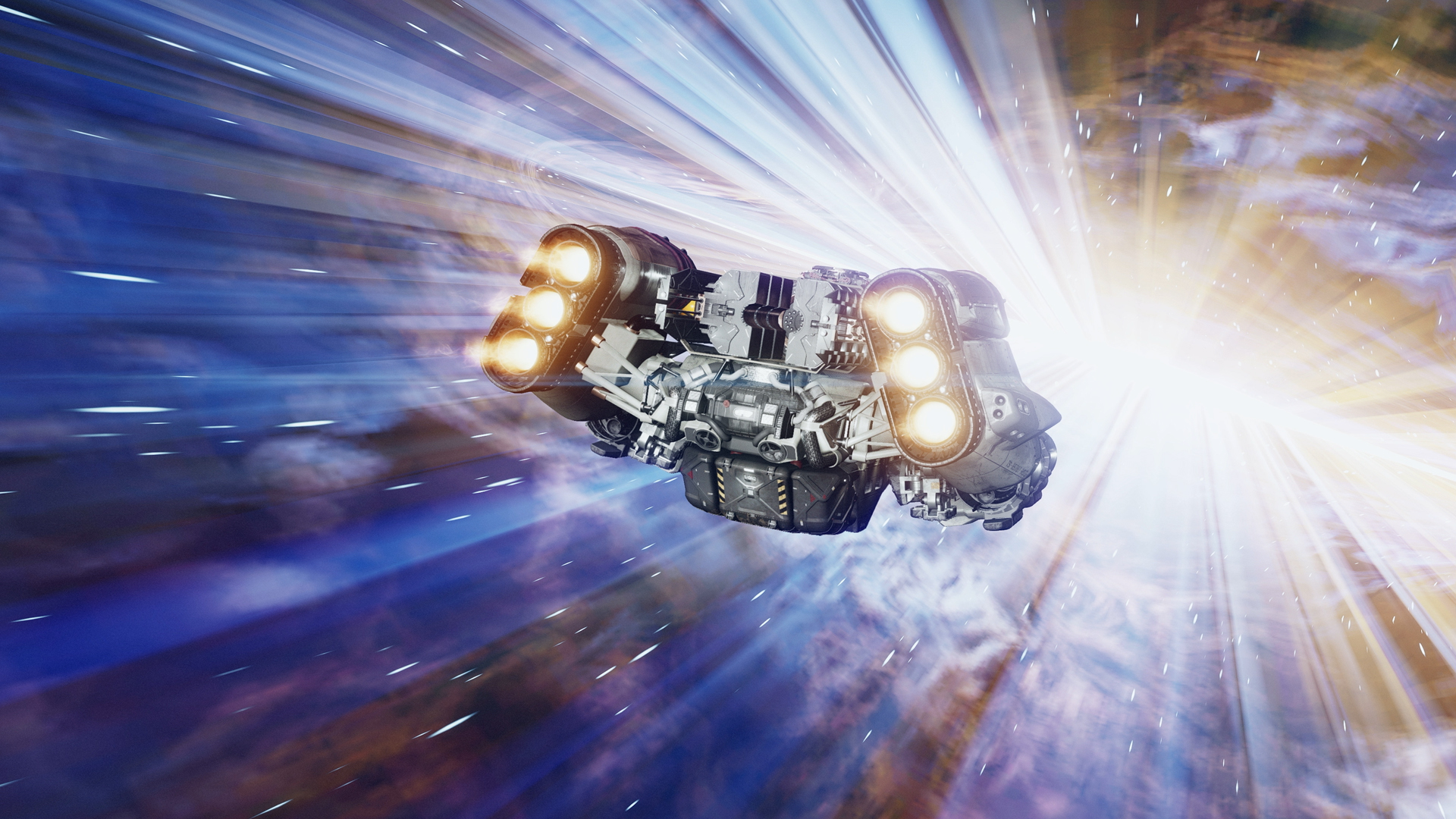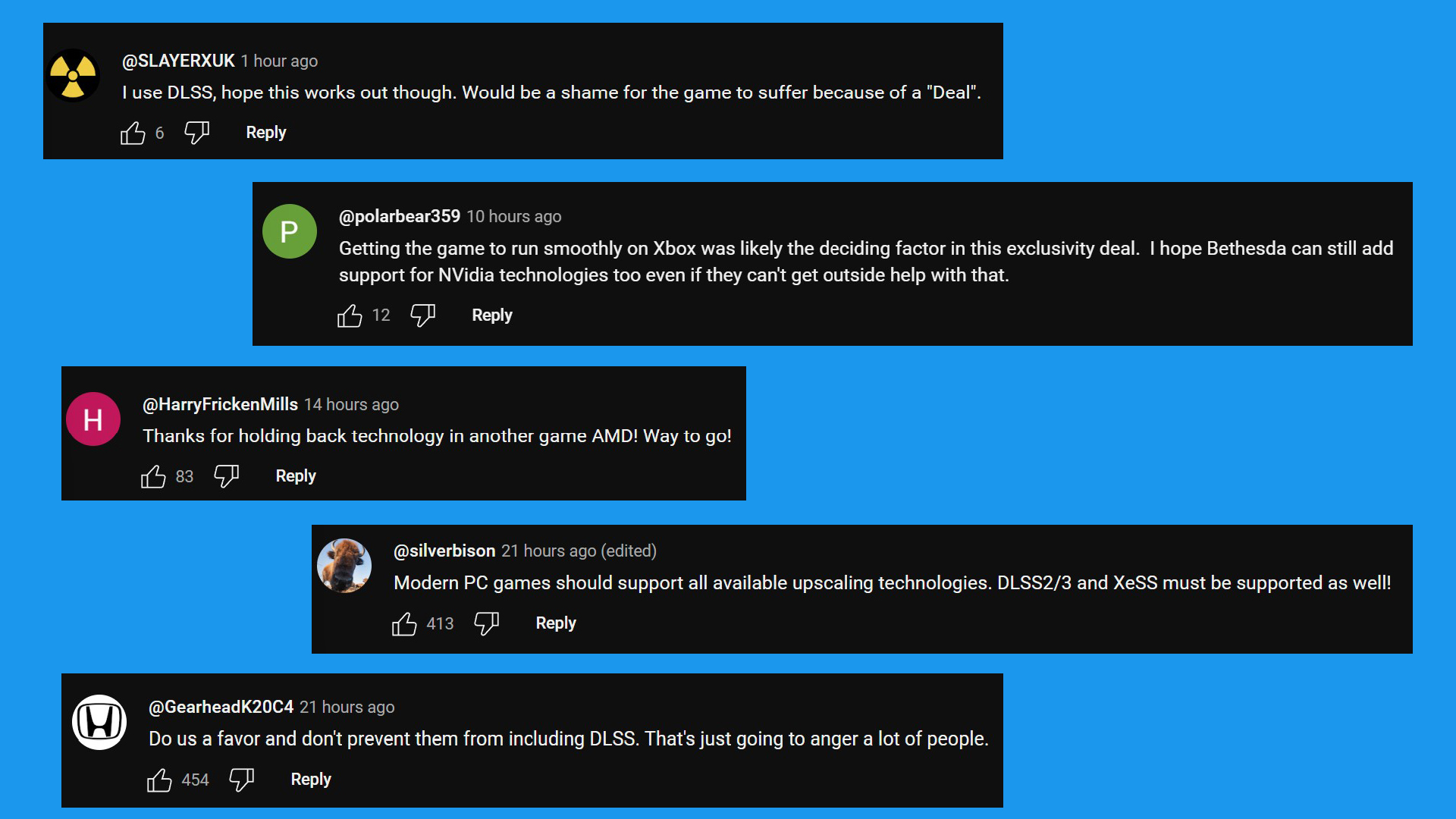Starfield is ‘exclusive’ AMD partner for Xbox and PC — and Nvidia fans are not okay
GPU giant AMD has announced a new partnership with Bethesda that will see Starfield optimized on Xbox Series X, Xbox Series S and gaming PCs.
While the hardware optimizations from AMD sound promising, the deal could have gamers with Nvidia GPUs sweating over whether they’ll be getting the best Starfield experience possible.
Speaking in a new Starfield video, Jack Huynh, SVP and GM for Computing and Graphics at AMD revealed the upcoming space epic would take advantage of both Ryzen 7000 series processors and Radeon 7000 series graphics.
“These optimizations both accelerate performance and enhance the quality of your gameplay using highly multi-threaded code that both Xbox and PC players will get to take advantage of”, says Huynh. “The partnership with Bethesda and AMD will create a transformational experience with more immersion, more detail, and more exploration.”
In the same video, Starfield’s game director, the legendary Todd Howard added: “We’ve built all new technology for it with Creation Engine 2, and working with AMD on that to make it look great and run great has been really, really special.”
“We have AMD engineers in our code base working on FSR image processing and upscaling and it looks incredible,” continued Howard. “You’re going to get the benefits of that obviously on your PC, but also on Xbox.”
Playing the (Star)field

Specifically, Starfield will use AMD’s FidelityFX Super Resolution 2.0 technology to improve the colossal sci-fi RPG’s performance. Many recent big hitters have taken advantage of FSR 2 temporal upscaling tech, like Call of Duty Warzone, Microsoft Flight Simulator, Forspoken, and Cyberpunk 2077.
All of the above sounds like great news for players intending to play Starfield on either Xbox Series X, Xbox Series S or one of the best gaming PCs with an AMD GPU.
But what about Starfield fans with Nvidia GPUs?
Analysis: Nvidia gamers are angry

Predictably, Nvidia fans are pretty annoyed at this potentially divisive Starfield deal. At time of writing, AMD’s official YouTube channel has nearly 1,700 comments, and many of those from Team Green fans who are concerned their GPUs will miss out on key graphical features.
Users like @polarbear359 “hope Bethesda can still add support for NVidia technologies too even if they can’t get outside help with that.” @SLAYERXUK adds “I use DLSS, hope this works out though. Would be a shame for the game to suffer because of a “Deal.” While @silverbison feels strongly that “Modern PC games should support all available upscaling technologies. DLSS 2/DLSS 3 and XeSS must be supported as well!”
As someone with an Nvidia GeForce RTX 4090, I get these concerns. DLSS 3 is a feature I love, and Nvidia’s fps-boosting tech is an absolute game-changer in the PC versions of Marvel’s Spider-Man: Remastered and its Miles Morales spin-off. If Starfield misses out on DLSS upscaling because of AMD’s deal with Bethesda, I’ll be pretty cheesed off.
Without knowing the precise ins and outs of the partnership, it’s impossible to know at this stage whether Starfield will get Nvidia-friendly features in the future.
It’s impossible to know at this stage whether Starfield will get Nvidia-friendly features in the future”
The good thing is, there are plenty of games that support both DLSS and FSR – think the recent Dead Space remake, Need for Speed Unbound and Call of Duty: Modern Warfare 2. So hopefully there shouldn’t be any technical reasons that should stop DLSS from coming to Starfield eventually.
Considering Bethesda is working so closely with Nvidia’s main rival, with so many AMD techniques being baked into the game’s code, it’s obviously a concern that Starfield may not be quite as well optimized on Team Green graphics cards.
Bethesda has a history of launching its games in rough shape — the PS3 version of Skyrim says hi — and there’s already controversy about Starfield only running at 30 fps at launch on Xbox Series X.
Thankfully, we don’t have long to wait to find out if our Nvidia GPU worries are misplaced or not, with the megaton sci-fi adventure launching on September 6.
More from Tom’s Guide
For all the latest Technology News Click Here
For the latest news and updates, follow us on Google News.
